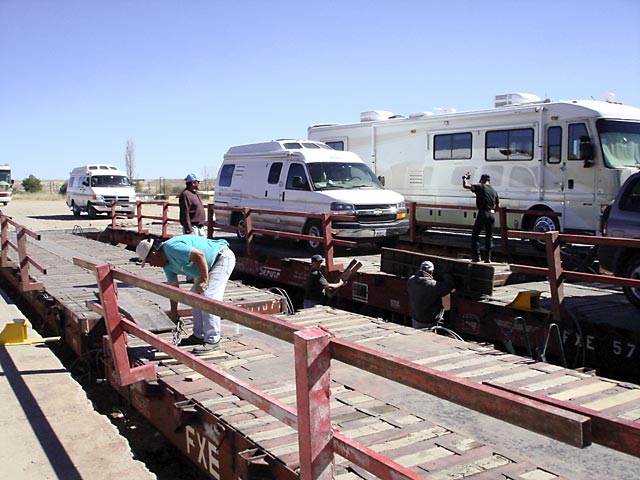
Loading the RVs on the Copper Canyon Train
Nov. 8-9, 2006
We drove to La Junta to load our RVs on the train that would take us through
the Copper Canyon. The train has a minimum requirement of 16 flatbed cars, and a
maximum limit of 24 flatbed cars. Our group came up a little short of the
minimum, so the RV caravan company worked out a deal with another caravan
company that was also short. Between the two groups we filled the train up to
the maximum. To load the RVs on to the flatbeds, you drive on to the last
flatbed car, and then on to flat beds in front of you that are still empty. Thus
the train is loaded from front to back. They split the train into 3 sections of
8 cars each on parallel tracks so that you only had to drive over 7 cars at most
to get to your car.

Ed is loading his Roadtrek while I am behind him waiting my turn. Since our
RVs are short, we can put both on one flatbed car and save some money.
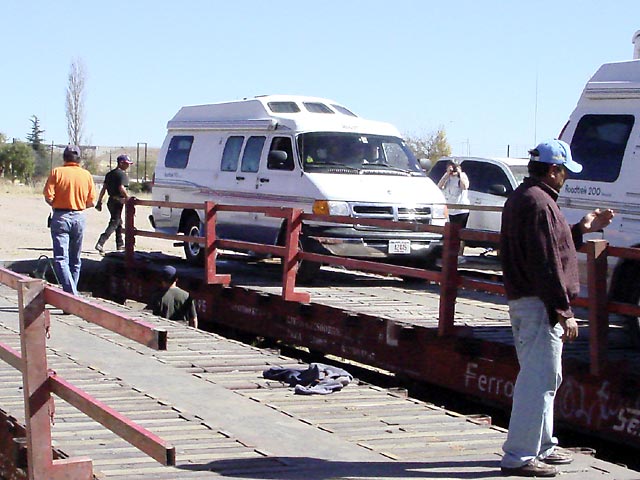
Then it was my turn. Our flatbed car was the last in a section of eight, so
we didn't have to drive very far. We will pay for it when we get to our
destination and unload; we will have to drive over seven flat bed cars to get
off. The train workers guide you to put your RV as far to the left as possible,
so you have room to walk on the right side. Note that the railing is only on the
right side of the car.
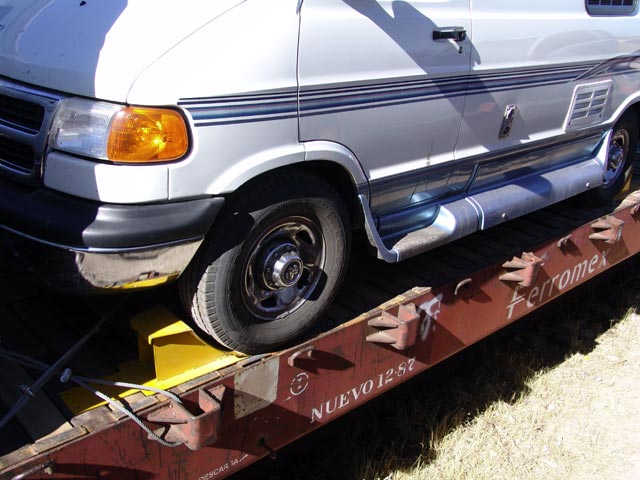
They really put your left tires right on the edge. Our wagon master told us
about this and said the train workers know what they are doing, so we should
trust them and follow their directions even though it feels like we are driving
off the edge of the railroad car. Once the RV is in the right position the front
and rear tires on both sides are blocked by chocks screwed into the railroad car
so the vehicle can't roll forward or backward.
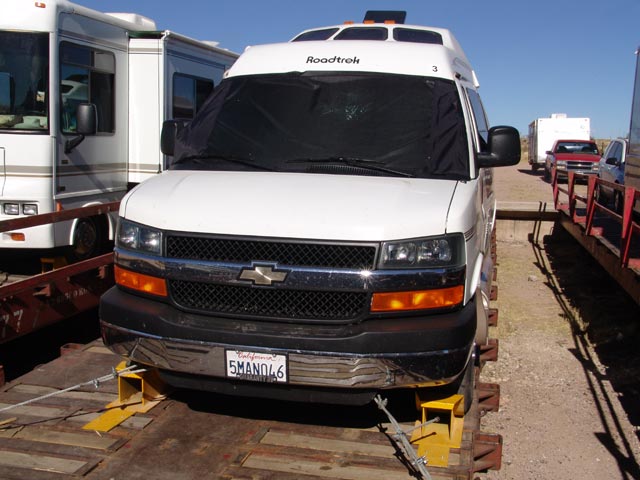
The RV is also secured by cables to prevent it from slipping sideways when
the train rocks back and forth. As a result, it is pretty well tied down.

Here is Gordon driving his motorhome on to the flat bed cars; he was at the
front of the next section, so he had to drive over seven flatbed cars to
get to his car.

To get from one flatbed car to the next, the workers put moveable steel
bridges across the gap between the cars. The width between the tires on Gordon's
tow vehicle (the Jeep) is narrower than on the motorhome, so the worker is
adjusting the placement of the bridges so that the Jeep can get to the next car.

Gordon and Diane in front of their motorhome after it is in place on the
flatbed car.

We spent that night on our RVs on the flatbed cars in the loading area. The
next morning they assembled the three train sections into a train. The photo
shows the view from our RV as our section is backed into the section containing
Gordon and Diane's motorhome as the lead car. Fortunately, everything came
together as planned and Ed and Pat were just ahead of us, and Gordon and Diane
were right behind us.
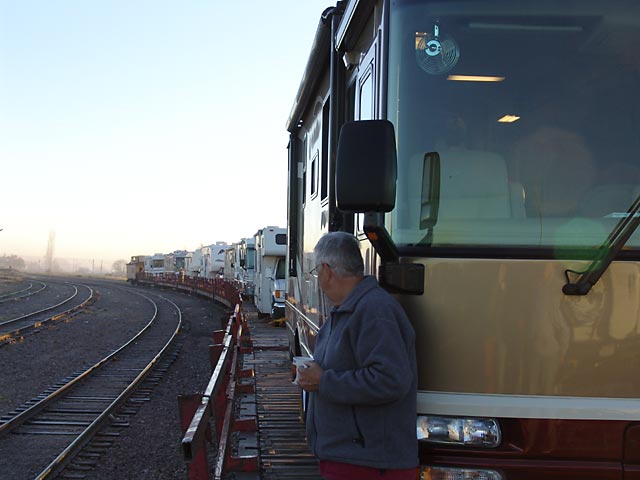
Finally, we were underway on the train trip that would take us through the Copper Canyon.